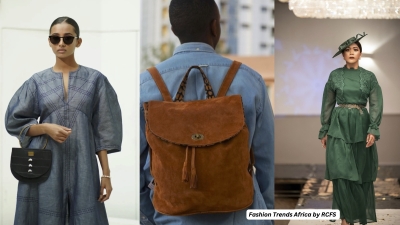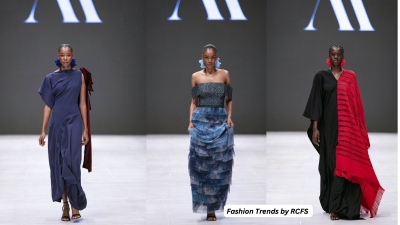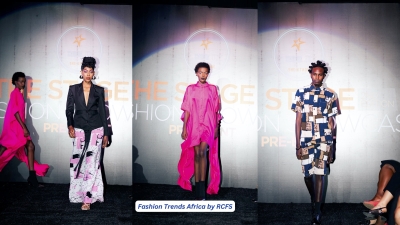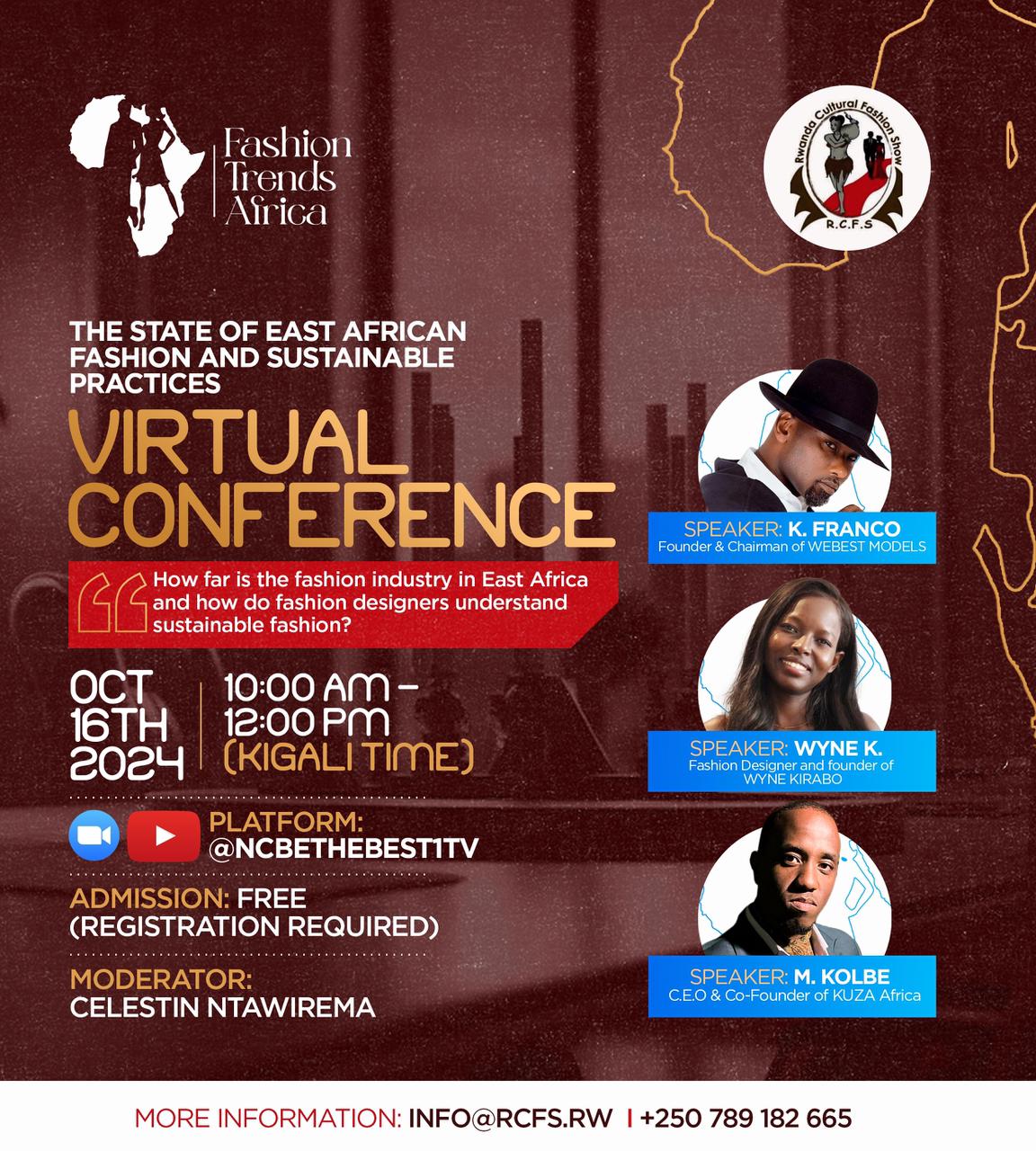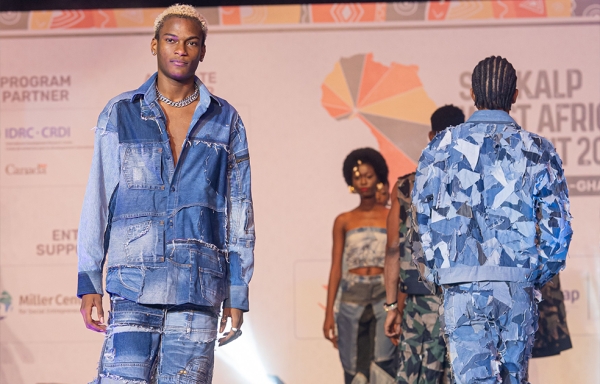 Circular Economy and Sustainability in Africa: Fashion and Textiles
Circular Economy and Sustainability in Africa: Fashion and Textiles
Circular Economy and Sustainability in Africa: Fashion and Textiles
The circular economy concept, which aims to minimize waste and maximize resource efficiency, has gained significant attention in the fashion and textile industry, particularly in Africa. The African continent faces unique challenges and opportunities concerning sustainable fashion and textiles.
 Stunning Kimono created from upcycled fabrics by AFC in Kenya [PHOTO NT]
Stunning Kimono created from upcycled fabrics by AFC in Kenya [PHOTO NT]
The fashion and textile industries play a significant role in the circular economy and sustainability efforts in Africa. These industries face various challenges, including resource depletion, environmental pollution, and unethical labor practices. However, there are also opportunities for adopting circular economy principles to address these issues and promote sustainable development.
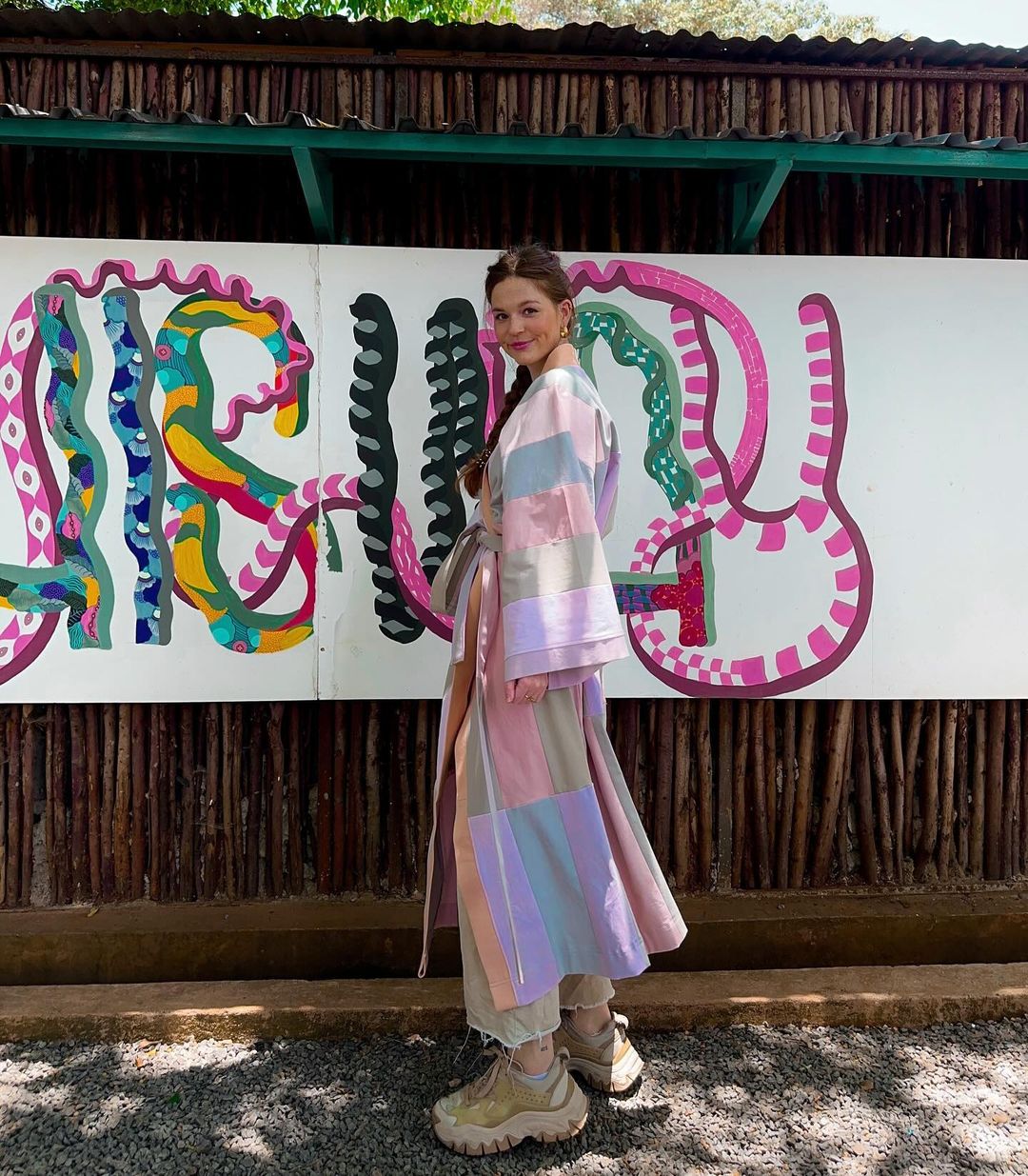 Stunning Kimono created from upcycled fabrics by AFC in Kenya [PHOTO NT]
Stunning Kimono created from upcycled fabrics by AFC in Kenya [PHOTO NT]
Textiles and clothing are a fundamental part of everyday life and an important sector in the global economy. Worldwide, the USD 1.3 trillion clothing industry employs more than 300 million people along the value chain, and the production of cotton alone accounts for almost 7% of all employment in some low-income countries. Out of the many African countries growing and selling cotton, eleven do so under the label Cotton Made in Africa (CmiA), representing 40% of African cotton production.
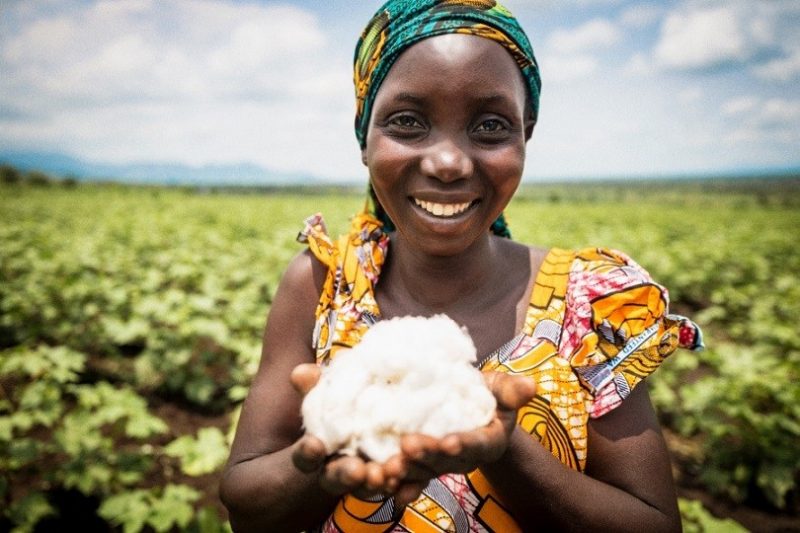 A woman holding cotton on a farm cotton [PHOTO NT]
A woman holding cotton on a farm cotton [PHOTO NT]
In Africa, cotton is almost exclusively grown by smallholder farmers, and there are very few large plantations. The cotton plant loves warmth: it needs about 200 days of sunshine in the season to flourish and bear fruit. For that reason alone, it does well in the dry or humid savannahs of Africa. The climate, with its high average temperatures and alternation between dry and wet seasons, favors the cultivation of this natural fibre crop.
Under the (CmiA) initiative, a total of 900,000 small-scale farmers across eleven African countries produce 715,000 tons of sustainable cotton for the international market and benefit from business and agricultural training. On the manufacturing side, historically, many African countries had vibrant textile industries, with long-standing links to EU-based brands and retailers. Although the biggest textile-producing countries today are China and India, “Made In Africa” is gaining traction, and many brands are moving their production from Asian to African countries, with Ethiopia positioning itself as a leader in the development of the textile industry in East Africa.
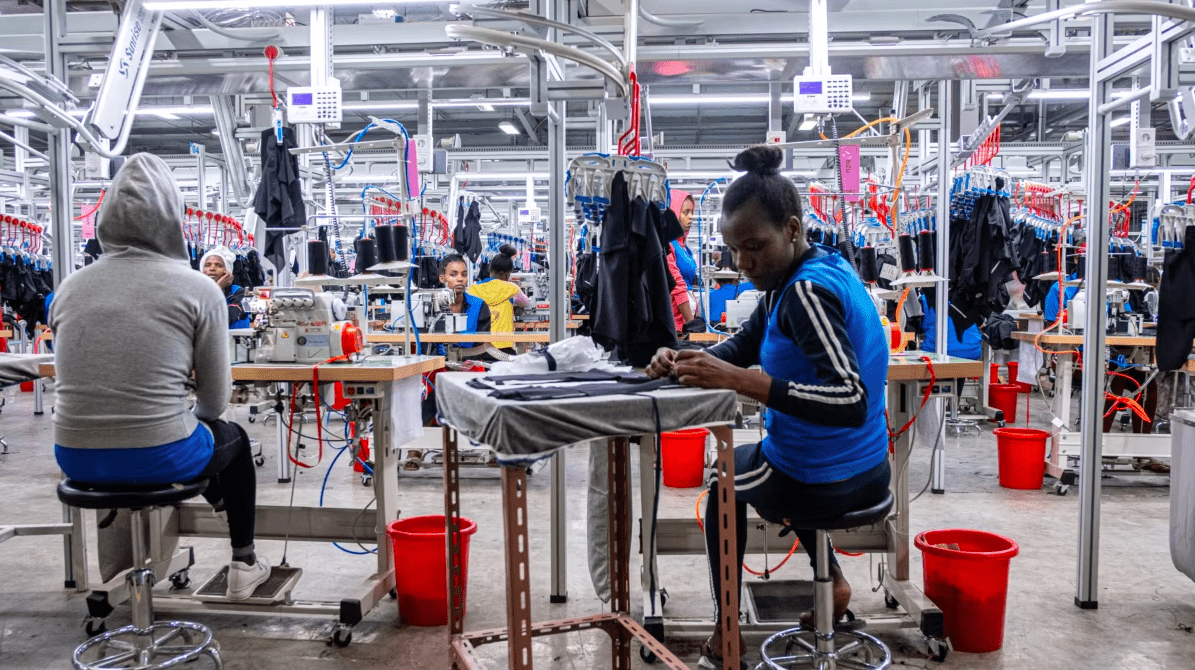 Inside a garment factory in Ethiopia [PHOTO NT]
Inside a garment factory in Ethiopia [PHOTO NT]
Currently, in sub-Saharan Africa, the combined apparel and footwear market is estimated to be worth USD 31 billion and the textile industry in Africa is estimated to grow at a CAGR of ~5% over the forecast period of 2019–2024. The demand for African designs, textiles, and garments is increasing within and beyond the continent. With the growing population and expanding middle classes, the demand for clothing (both local and imported) is expected to rise. African countries, such as Rwanda and South Africa, are planning to revitalize the national textile industry.
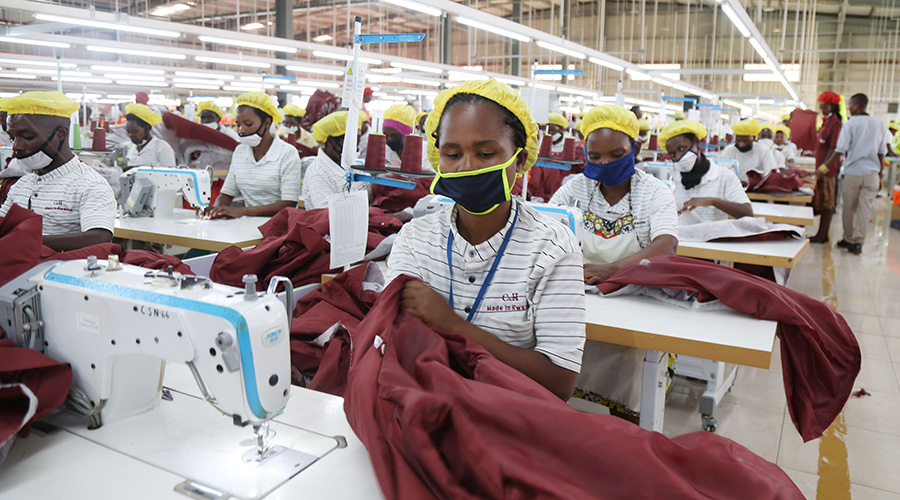 Inside a garment factory in Rwanda [PHOTO NT]
Inside a garment factory in Rwanda [PHOTO NT]
On the global stage, African fashion designers are gaining prominence and for many people, the African fashion industry remains a source of economic inclusion, innovation, and promotion of cultural identity.
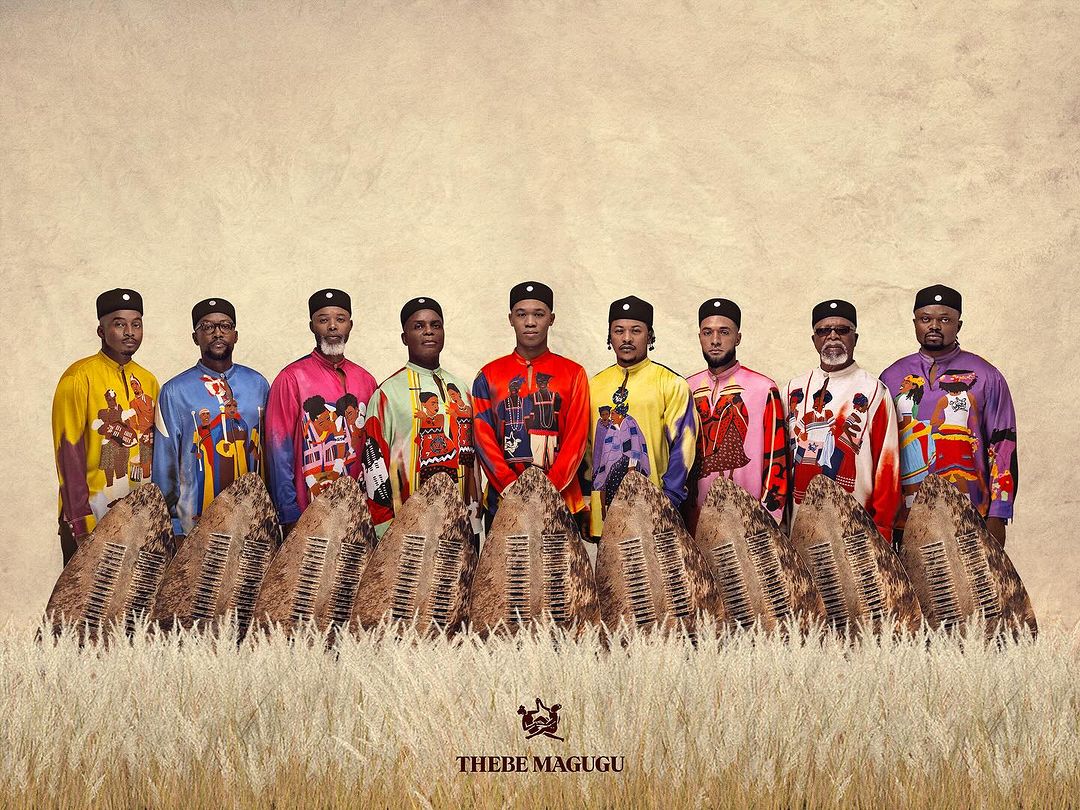 A collection made in South Africa by THEBE MAUGUG [PHOTO THEBE MAUGUGU]
A collection made in South Africa by THEBE MAUGUG [PHOTO THEBE MAUGUGU]
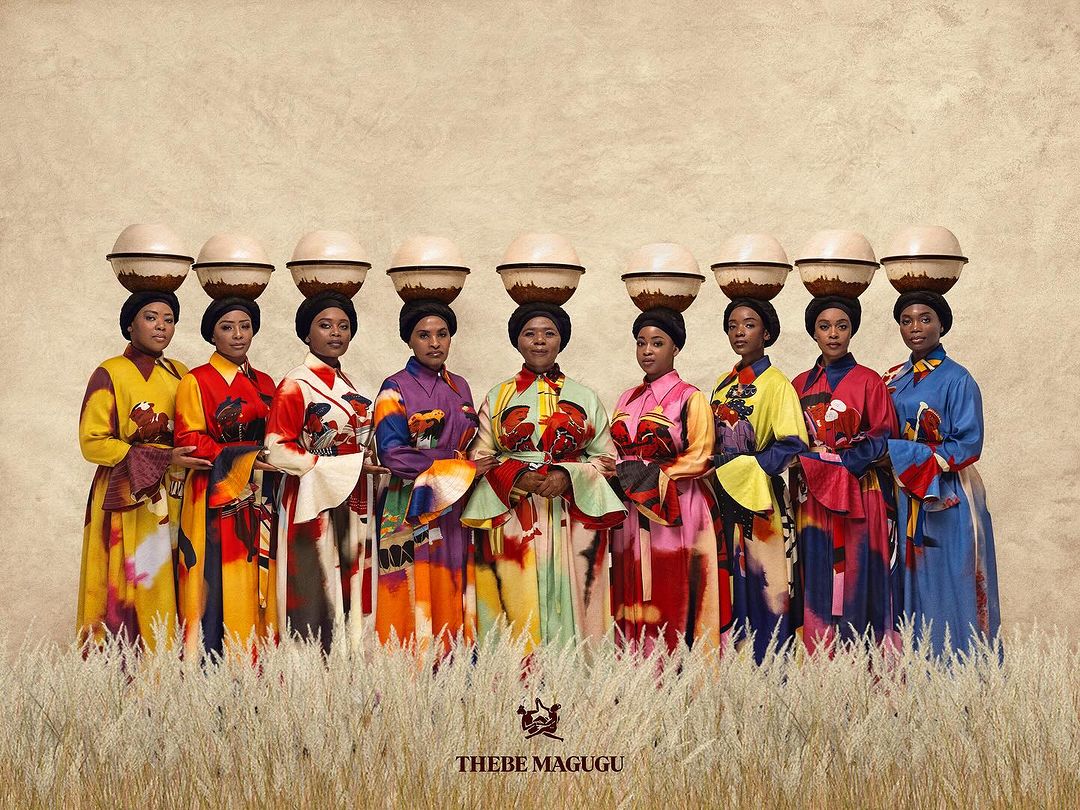 A collection made in South Africa by THEBE MAUGUG [PHOTO THEBE MAUGUGU]
A collection made in South Africa by THEBE MAUGUG [PHOTO THEBE MAUGUGU]
These encouraging trends for the textile sector are not without challenges. Firstly, conventional textile manufacture is associated with labor rights violations; unsafe working conditions; excessive consumption of raw materials, water, and energy; use of Persistent Organic Pollutants (POPs) in industrial operations; as well as water and air pollution. As big brands are increasingly seeing Africa as a new destination for their production facilities, the risks of replicating the same environmental and social negative outcomes seen in some Asian countries are high.
Secondly, downstream, the impact of clothing waste is particularly devastating for African countries, where second-hand clothing is increasingly exported. In the capital of Ghana, the Accra Metropolitan Assembly picks up around 70 metric tons of imported clothing waste from the Kantamanto market every day, six days a week. A lack of capacity to collect and recover textiles leads to clothing being disposed of informally – meaning it is burned and the ashes are swept into the gutters, where it makes its way to the sea; or it is brought to ‘informal’ dumpsites. The total impact of leaching dyes, chemicals, and microfibres on the environment, people’s health, and biodiversity loss is significant.
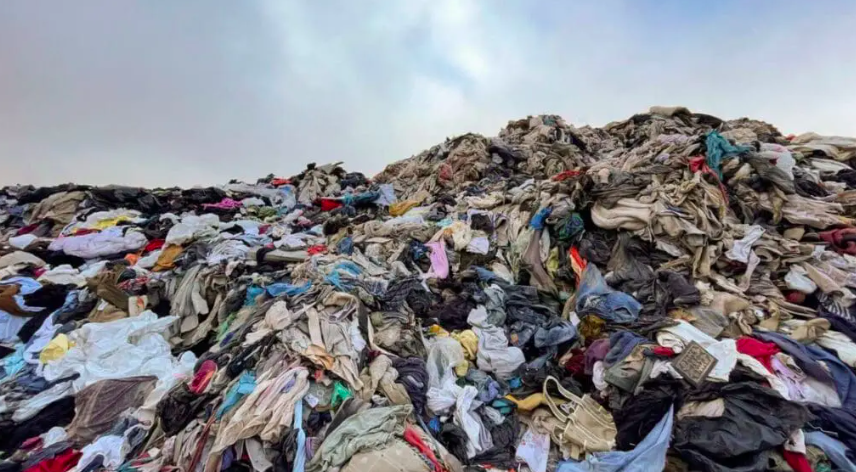 Old clothes dumped in mixed with other trash [PHOTO NT]
Old clothes dumped in mixed with other trash [PHOTO NT]
According to Climate Action, the challenges of textile waste in Africa are numerous, with serious environmental, economic, and social consequences. " People on the red carpet wear outfits that they will never wear again This is to argue that the fashion sector lacks sustainability and environmental care, resulting in increased textile waste in Africa. The catchphrase is always “Who are you wearing” and there will be no recycled outfits on the next red carpet"
Furthermore, according to the Future Investment Initiative Institute, the fashion industry emits more than 1.2 billion tons of greenhouse gas emissions every year as more clothes are produced each year and worn for increasingly shorter periods. That represents one-tenth of total emissions, more than all foreign flights and maritime shipping combined. Fast fashion companies are dumping textile waste in Africa, exacerbating a cycle of environmental degradation and social injustice. Africa is at the center of the expanding textile waste challenge.
The case for a thriving textile industry is clearly emerging in Africa, with potential important gains in terms of job creation and skills development. A circular economy holds the key to a prosperous, inclusive, and resilient fashion industry in Africa while avoiding the drawbacks of the current linear system that have detrimental impacts on people’s well-being and the environment.
The Latest in African Print Patterns
 African print pattern- Made in Africa dress [PHOTO NT]
African print pattern- Made in Africa dress [PHOTO NT]
African print patterns have always been a statement of culture, identity, and personal style. In 2024, we're seeing these prints evolve into even more intricate, bold, and dynamic designs. From the classic Ankara to the mesmerizing Kente, designers are pushing boundaries and blending patterns. African prints have always been very beautiful and colorful, but this year we've already seen that this has been turned up a notch.
 African print patterns [PHOTO NT]
African print patterns [PHOTO NT]
Making the wearer of these colorful fabrics and gorgeous patterns feel royal. This is especially seen with the launch of the new silky Satin Royal fabric by Vlisco. The traditional fabrics we all know and love are still very much alive, but we think we'll be seeing more fabrics with new patterns and color pallets that will suit modern designs.
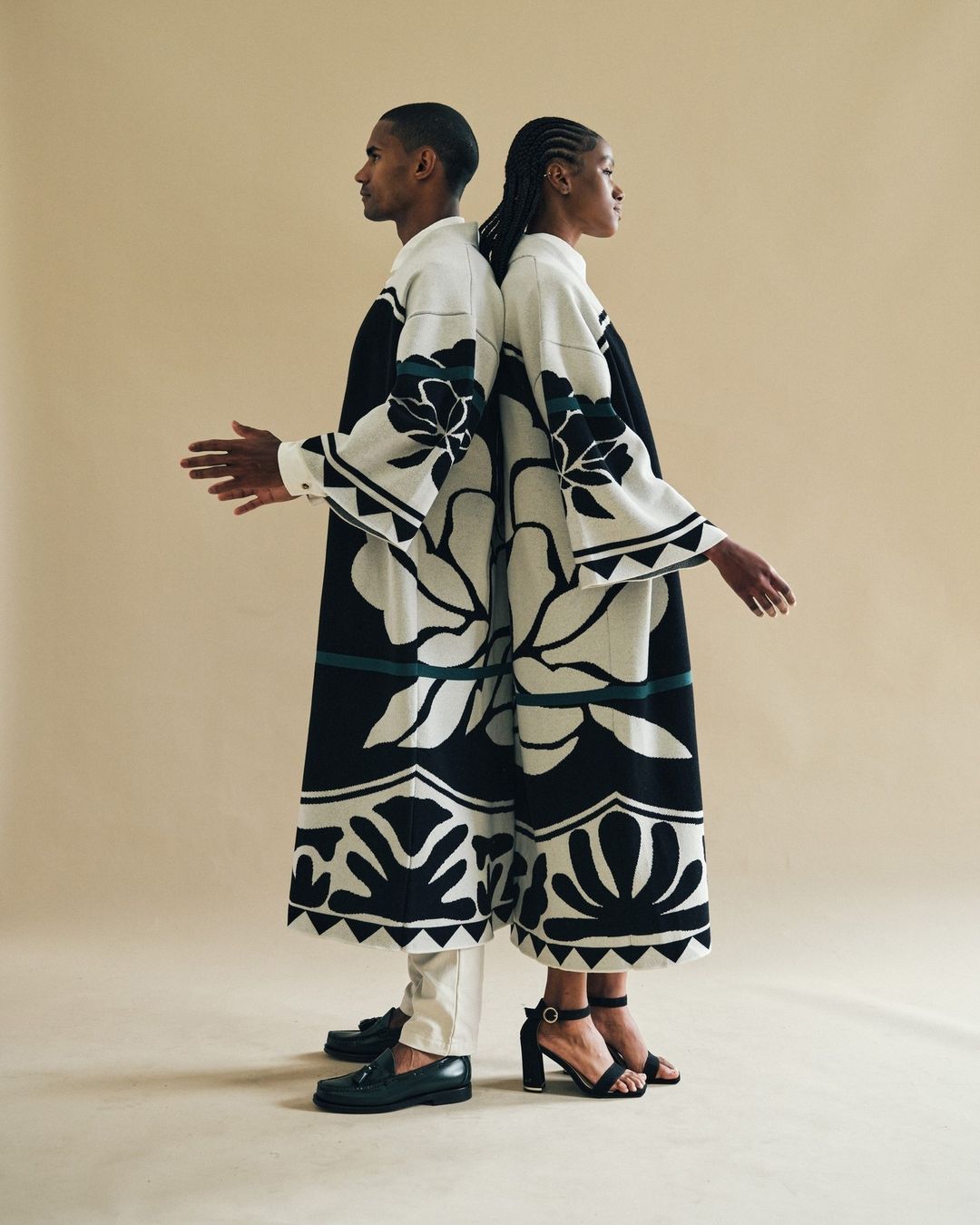
African print pattern- Made in Africa by Mille Colines [PHOTO MC]
Some information in this article is from the research by the Ellen MacArthur Foundation
Latest from RCFS
- One week to go until Africa Sourcing and Fashion Week 2024: Designers, Exhibitors, and Speakers
- One week to go until Africa Sourcing and Fashion Week 2024: Designers, Exhibitors, and Speakers
- 9 Years Milestone: Moses Turahirwa and His Moshions Brand Rwanda-Based
- 9 Years Milestone: Moses Turahirwa and His Moshions Brand Rwanda-Based
- What to Expect in Lagos Heineken Fashion Week 2024: Runways Kick off Today



